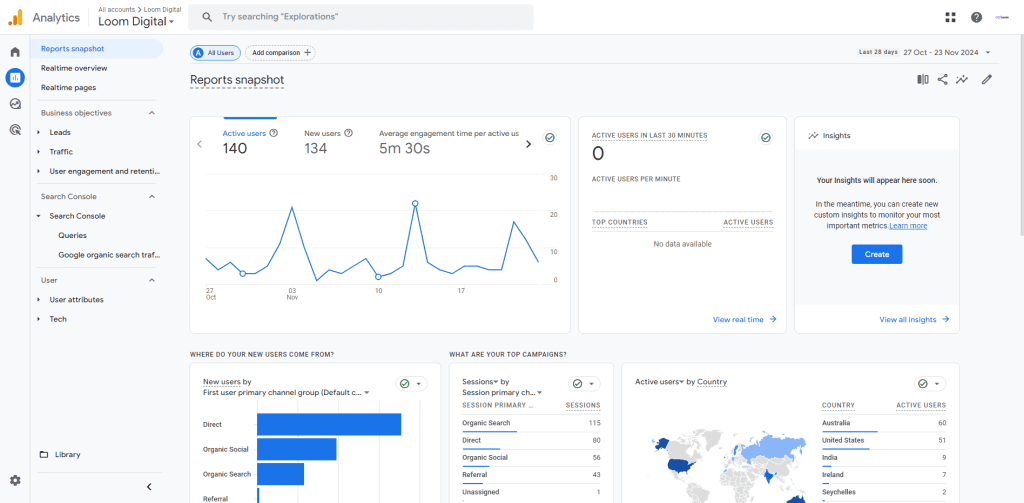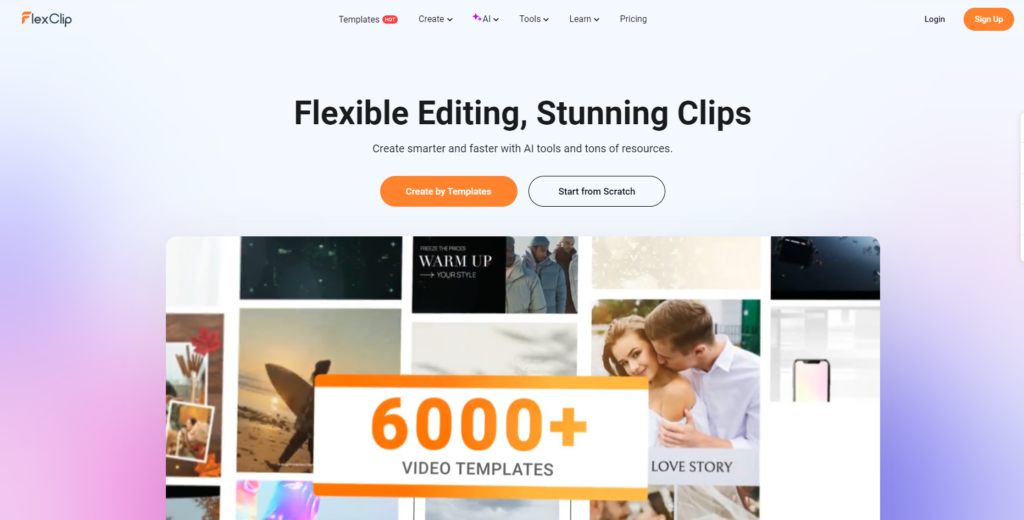In today’s digital age, mastering DIY SEO marketing is crucial for enhancing your online presence and driving organic traffic to your website. This DIY SEO guide will walk you through the essential steps and strategies to optimise your website effectively.
For a broader understanding of SEO fundamentals, start with our Learn Search Engine Optimisation guide
Understanding Search Engines
Search engines like Google, Bing, and Yahoo use complex algorithms to rank websites in search results. Understanding how these search engine algorithms work is vital for DIY search engine optimiseation success. They aim to provide the most relevant results for users’ search queries, and your goal is to optimise your website to rank higher in these search engine results.
Keyword Research Fundamentals
Keyword research forms the foundation of any successful DIY SEO strategy. Identifying relevant search queries is crucial as it helps align your content with what your target audience is searching for. It involves identifying relevant keywords and phrases that your target audience commonly uses. utilise SEO tools such as Google Keyword Planner, Ahrefs, or SEMrush to discover target keywords. Analysing competitors’ websites can also help identify gaps in your keyword research.
Setting Up for DIY SEO Success

To set up your website for DIY SEO success, start by configuring Google Search Console and Google Analytics to track your website’s performance. Conducting a site audit is important to identify and fix issues that may hinder your SEO efforts. Verify your site in Google Search Central to improve visibility. Creating a sitemap is also essential to help search engines crawl your website efficiently. Additionally, optimise your website’s structure and navigation to enhance user experience.
Utilising various SEO resources is crucial for both beginners and seasoned professionals to stay updated and effectively implement search engine optimiseation strategies.
Technical SEO Essentials
Technical SEO focuses on the backend aspects of your website that influence search engine rankings. Identifying and fixing crawl errors is crucial to ensure search engines can properly index your site. Ensure your site is mobile-friendly and loads quickly. Use header tags, meta descriptions, and internal linking to improve the website’s structure. Additionally, optimise images and videos to reduce file size and boost page speed.
On-Page SEO Optimisation
On-page SEO is about optimiseing individual web pages for better search engine visibility. Integrate relevant keywords, including your target keyword, into page titles, meta tags, descriptions, and headings. Optimise existing content to improve your search engine ranking. Employ internal links to connect relevant pages, enhancing both user experience and SEO.
Internal Linking Strategies
Internal linking aids search engines in understanding your website’s structure and content. Use internal links to connect relevant pages and improve user navigation. Establish a clear hierarchy of pages to facilitate search engine crawling. utilise anchor text to describe the content of linked pages effectively.
Off-Page SEO and Link Building
Off-page SEO involves acquiring high-quality backlinks from other websites. Maintaining a healthy backlink profile is crucial for improving your site’s authority and search engine rankings. Implement link-building strategies such as guest blogging, broken link building, and HARO. Creating high-quality, relevant content naturally attracts backlinks. Avoid buying links or engaging in link schemes, as these can harm your SEO efforts.
While DIY SEO efforts can be effective, hiring an SEO agency provides access to expertise and can save time, though it’s important to carefully select the right agency to avoid potential pitfalls.
Content Creation and Optimisation
Creating and optimising content is a cornerstone of any successful DIY SEO strategy. High-quality, engaging, and informative content is essential for attracting and retaining your target audience. Conducting a content audit is crucial to identify gaps and opportunities in your existing content. Here are some practical tips to help you create and optimise your content effectively:
- Conduct Thorough Keyword Research: Start by identifying relevant keywords and phrases that your target audience frequently searches for. Use SEO tools like Google Keyword Planner, Ahrefs, or SEMrush to discover these target keywords.
- Strategic Keyword Placement: Integrate your target keywords naturally throughout your content. This includes placing them in the title, meta description, headings, and body copy. Avoid keyword stuffing, as it can harm your search engine rankings.
- Optimise for User Experience: Use clear and concise language to make your content easy to read. Break up long paragraphs with headings and subheadings to improve readability. This not only enhances user experience but also helps search engines understand your content better.
- Internal Linking: Use internal links to connect related pages on your website. This helps users navigate your site more easily and allows search engines to understand the hierarchy and structure of your content.
- Regular Content Updates: Keep your content fresh and relevant by regularly updating and refreshing it. This signals to search engines that your website is active and provides up-to-date information.
By focusing on these aspects, you can create content that not only engages your audience but also ranks well in search engine results.
User Experience and SEO
User experience (UX) and SEO are closely intertwined, and a website with a poor user experience can negatively impact its search engine rankings. Conversely, a website with a good user experience can see improved rankings. A high bounce rate can negatively impact SEO by indicating that users are not finding what they are looking for, leading to lower rankings. Here are some tips to enhance your website’s user experience and SEO:
- Mobile-Friendliness: Ensure your website is mobile-friendly with a responsive design that adapts to different screen sizes and devices. Mobile usability is a significant ranking factor for search engines.
- Clear and Concise Navigation: Use straightforward language in your content and navigation menus. This helps users quickly find what they’re looking for, reducing bounce rates and improving user satisfaction.
- Optimise Loading Speed: A slow-loading website can frustrate users and lead to higher bounce rates. Optimise your website’s loading speed by compressing images, leveraging browser caching, and minimising code.
- Internal Linking: Implement internal linking to help users navigate your website and understand the content hierarchy. This also aids search engines in crawling and indexing your site more effectively.
- Continuous UX Testing: Regularly test and iterate on your website’s user experience. Use tools like Google Analytics to identify areas for improvement and make data-driven decisions to enhance UX.
By prioritising user experience alongside your SEO efforts, you can create a website that not only ranks well in search engine results but also provides a seamless and enjoyable experience for your visitors.
SEO for Mobile Devices
With the majority of internet users accessing websites through mobile devices, optimiseing your website for mobile is crucial for a successful DIY SEO strategy. Here are some tips to improve your website’s mobile-friendliness:
- Responsive Design: Ensure that your website has a responsive design that adapts to different screen sizes and devices. This not only enhances user experience but also boosts your search engine rankings by improving mobile usability.
- Mobile-Friendly Templates: Use mobile-friendly templates and themes that are optimised for mobile devices. These templates are designed to provide a seamless experience for mobile users.
- Loading Speed: Optimise your website’s loading speed, as slow loading speeds can negatively impact user experience and search engine rankings. Compress images, leverage browser caching, and minimise code to improve speed.
- Mobile Keywords: Use mobile-friendly keywords and phrases in your content to improve search engine rankings. Mobile users often use different search queries than desktop users, so tailor your keyword strategy accordingly.
- Testing: Test your website’s mobile-friendliness using tools like Google’s Mobile-Friendly Test. This tool provides insights into how well your site performs on mobile devices and offers suggestions for improvement.
By focusing on these aspects, you can ensure that your website is optimised for mobile users, enhancing both user experience and search engine visibility.
Voice Search Optimisation
Voice search is becoming increasingly popular, and optimiseing your website for voice search can improve your search engine rankings and drive more traffic to your website. Here are some tips to optimise your website for voice search:
- Natural Language: Use natural language and long-tail keywords in your content to improve voice search rankings. Voice search queries are often more conversational, so your content should reflect this.
- Conversational Keywords: Optimise your website’s content for conversational keywords and phrases. Think about how people speak and frame their questions when using voice search.
- Schema Markup: Use schema markup to provide search engines with additional context about your website’s content. This helps search engines understand your content better and can improve your chances of appearing in voice search results.
- Concise Content: Ensure that your website’s content is concise and easy to read, as voice search users often look for quick answers to their questions. Break down complex information into simple, digestible pieces.
- Testing: Use tools like Google’s Voice Search Simulator to test your website’s voice search optimiseation. This can help you identify areas for improvement and ensure your content is optimised for voice search.
By implementing these strategies, you can enhance your website’s visibility in voice search results and attract more traffic from voice search users.
SEO for Video Content

Video content is becoming increasingly popular, and optimising your video content for search engines can drive more traffic to your website. Here are some tips to optimise your video content for search engines:
- Keyword Optimisation: Use relevant keywords and phrases in your video titles, descriptions, and tags. This helps search engines understand the content of your videos and improves your chances of ranking higher in search results.
- YouTube Optimisation: Optimise your video content for YouTube, as it is the second-largest search engine in the world. Use YouTube-specific SEO strategies to enhance your video’s visibility.
- Schema Markup: Use schema markup to provide search engines with additional context about your video content. This can improve your video’s chances of appearing in search results.
- High-Quality Content: Ensure that your video content is high-quality and engaging, as this can improve user experience and search engine rankings. High-quality videos are more likely to be shared and linked to, which can boost your SEO efforts. With tools like FlexClip, you can create professional-grade videos that stand out and resonate with your audience.
- Performance Tracking: Use tools like YouTube Analytics to track your video content’s performance and optimise for better results. Analysing metrics such as watch time, audience retention, and engagement can help you refine your video SEO strategy.
By focusing on these aspects, you can optimise your video content for search engines and drive more traffic to your website.
Social Media and SEO
Social media can play a significant role in your DIY SEO strategy, as it can drive more traffic to your website and improve your search engine rankings. Here are some tips to optimise your social media presence for SEO:
- Keyword Usage: Use relevant keywords and phrases in your social media profiles and posts. This helps search engines understand the content of your social media pages and can improve your rankings.
- Engaging Content: Share high-quality and engaging content on your social media profiles to drive more traffic to your website. Engaging content is more likely to be shared, increasing your reach and visibility.
- Analytics Tools: Use social media analytics tools to track your performance and optimise for better results. Tools like Hootsuite and Google Analytics can provide valuable insights into your social media strategy.
- Complete Profiles: Ensure that your social media profiles are complete and up-to-date, as this can improve user experience and search engine rankings. Include relevant information such as your business name, address, and contact details.
- Management Tools: Use tools like Hootsuite to manage your social media presence and optimise for better results. These tools can help you schedule posts, track engagement, and analyse performance.
By integrating these strategies into your social media efforts, you can enhance your SEO and drive more traffic to your website.
DIY SEO Tools and Resources
Leverage SEO resources and tools like Ahrefs, SEMrush, and Moz to monitor website performance and pinpoint areas for improvement. SEO audit tools can help identify and fix issues effectively. Free resources like Google Search Console, Google Analytics, and Google Keyword Planner are invaluable. Staying updated with the latest SEO trends and best practices through blogs and online communities is essential.
Measuring and Tracking DIY SEO Success
Utilise Google Analytics to track website traffic, engagement, and conversion rates. Conversion rate optimiseation is crucial in measuring SEO success as it directly impacts the effectiveness of your strategies. Keep an eye on search engine rankings and adjust your DIY SEO strategies as needed. Monitor keyword rankings and refine your keyword research strategies accordingly. Use SEO tools to track backlinks and adapt your link-building strategies.
Common DIY SEO Mistakes to Avoid
Avoid common pitfalls such as keyword stuffing and over-optimiseation. Duplicate content can significantly impact your SEO by confusing search engines and diluting your ranking potential. Don’t overlook technical SEO and website structure. Refrain from buying links or participating in link schemes. Ensure your website is mobile-friendly and loads quickly to avoid penalties.
Advanced DIY SEO Techniques
Implement advanced techniques like schema markup to enhance search engine understanding of your content. Optimise for voice search and featured snippets. Use A/B testing to improve website conversion rates. Analyse competitor websites using SEO tools for further insights.
Local SEO for Small Businesses
Optimise your website for local search by consistently including your business name, address, and phone number (NAP). Local citations are crucial for improving your local SEO rankings. Use location-specific keywords and phrases. Create and optimise a Google My Business listing. Encourage customers to leave online reviews to boost local SEO.
E-commerce SEO Strategies
For e-commerce sites, optimise product pages by incorporating relevant keywords and descriptions. Use high-quality product images and videos. Establish a clear hierarchy of product categories and subcategories. To further enhance your SEO efforts, consider using product schema to improve search engine understanding of product information. utilise schema markup to improve search engine understanding of product information.
DIY SEO for Beginners
Beginners should start with basic SEO strategies like keyword research and on-page optimiseation. Use an SEO checklist to ensure all basic SEO tasks are covered. Use free SEO tools and resources to monitor website performance. Focus on creating high-quality, relevant content. Avoid common DIY SEO mistakes and stay updated with the latest best practices.
DIY SEO Best Practices
Concentrate on producing high-quality, relevant content. Having a well-defined content strategy is crucial for effective SEO. Use internal linking to connect related pages and enhance user experience. Optimise for technical SEO and website structure. Keep abreast of the latest SEO trends and best practices to maintain a competitive edge.
Conclusion
DIY SEO requires time, effort, and patience but can be a cost-effective way to enhance website visibility and user experience. Focus on creating high-quality, relevant content and optimising for technical SEO and website structure. Use SEO tools and resources to track performance and identify areas for improvement. Stay informed about the latest SEO trends and best practices to achieve long-term DIY SEO success.
